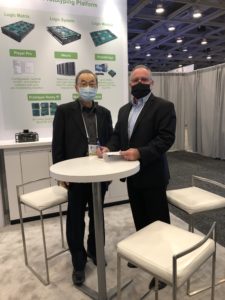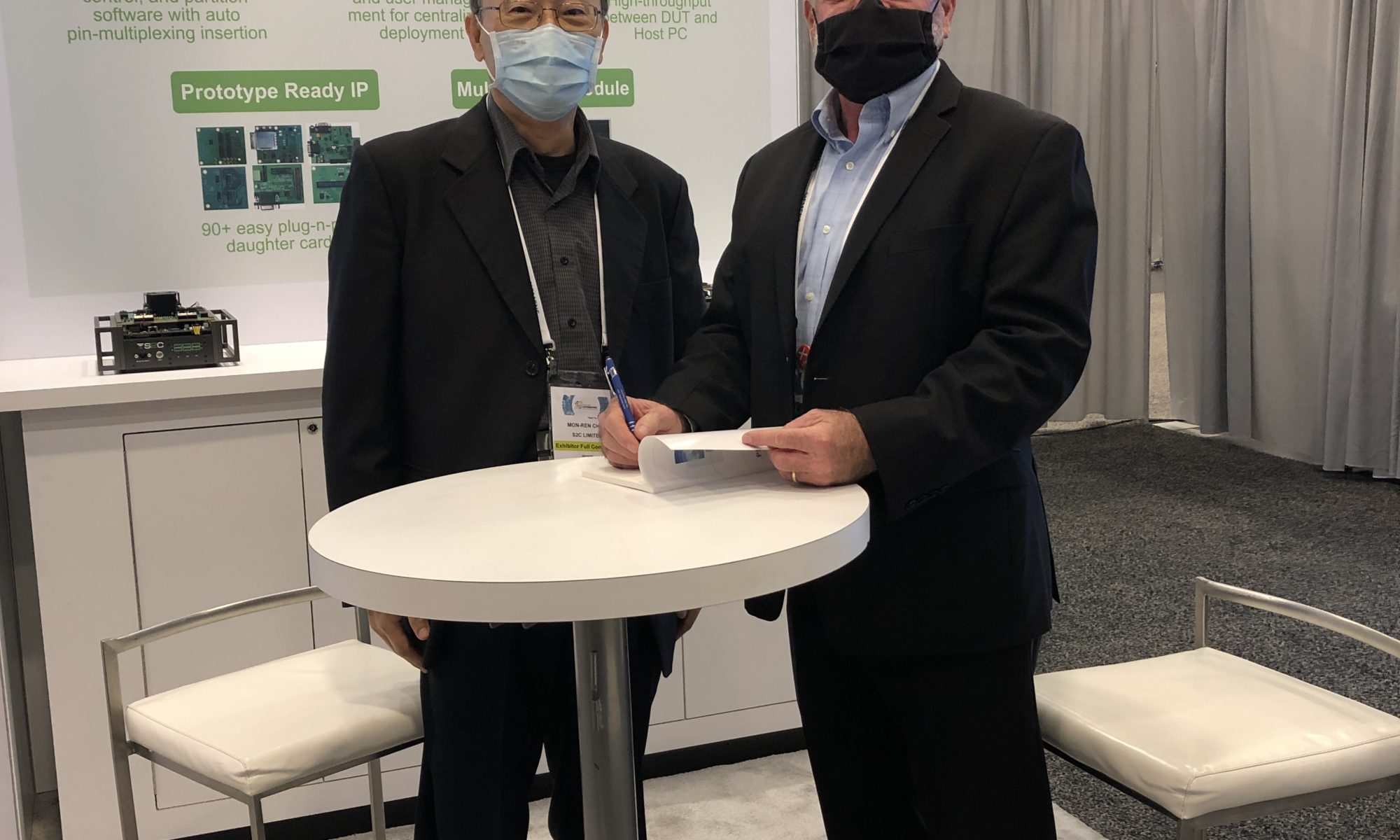
Now that the 58th Design Automation Conference held this year in San Francisco has concluded, we take a minute to look back at the results and ascertain what it meant for our company.
Unfortunately, many popular tradeshows held in the time of Covid have suffered a drop in attendance, and DAC was no exception. Despite this however, S2C is pleased to report the quality of visitors to our booth was quite high. In contrast to several other vendors, we chose to exhibit and demonstrate our latest hardware and software offerings on the show floor, giving customers the chance to examine our products live and close-up.
High-performance prototyping stands at the crossroads of two powerful trends: the increasing size and complexity of SoCs, coupled with the need to validate systems at-speed on real hardware. S2C is ideally positioned to capitalize on these trends. DAC gave us the opportunity to demonstrate how we can satisfy designer’s needs, and helped us by generating good interest, good questions, and good leads.
On the show floor we displayed a number of our latest prototyping products, including the Prodigy Logic System 10M based on the industry’s largest FPGA, Intel’s Stratix 10 GX 10M. Also on display were our Xilinx-based systems, the Prodigy Logic S7-19P, and S7-9P, both getting their fair share of attention.
But without question, the highlight of our booth was our new Prodigy Logic Module LX2. Built around Xilinx’s largest Virtex Ultrascale+ device, the LX2 houses eight VU19P FPGAs, producing a machine of unrivaled speed and capacity. Furthermore, the LX2 architecture provides for interconnecting up to 8 LX2 units, offering the breathtaking capacity of 64 FPGAs – a true heavy-lifting machine. Several customers commented how impressed they were with the system’s specs and capabilities. In the world of high-performance prototyping, the LX2 looks like the one to beat.
But what good is a high-performance prototype if you can’t perform debug? This was a question on the minds of many. We addressed that issue by showing the MDM Pro, our multi-FPGA debug module that is compatible with all our prototyping platforms. The MDM Pro captures the event data generated by long-running events, allowing the on-board FPGA memory to be preserved for your design needs. When we pointed out the MDM Pro module comes as a built-in part of both the 10MQ and S7-19PQ systems, there were several nods of approval.
One skeptic however, remained unconvinced. “Nice hardware,” he was heard to say. “But you guys got any software to go with this stuff?”
Absolutely. If 18 years in the business has taught us anything, it’s that productivity software is critical to the prototyping effort. We were able to demonstrate our premiere software offering PlayerPro, which itself is comprised of several modules: Compile, for partitioning, downloading, and configuring a prototype; Runtime, a module for dynamic control of your prototype; and Debug, to configure and work with the MDM Pro hardware.
Also demonstrated was ProtoBridge: an application that supports 4GB/s data transfers via a C API to an AXI4 bus driver. This tool enables high bandwidth data transfers – such as video – between a PC and an FPGA.
To round out our offerings, we displayed a portion of our Prototype Ready IP Library: a rich collection of plug-and-play daughter cards that include memory and interfaces to speed your prototype development. During the course of the show, we responded to inquiries from customers working in fields as diverse as Storage, AI, Networking, and Automotive. There was a fair amount of interest from universities as well.
More than one customer asked about system availability. We were pleased to give the answer everyone wanted to hear: these systems are ready and available now. Your Christmas presents may be stuck in the back of Santa’s Workshop, but not S2C! Our products are in stock and ready to ship with short lead times and fast deliveries!
Overall, DAC was a successful show for us, helping to give our products visibility in the market, and setting the stage for next year. DAC is a unique and useful event, and we’ll definitely be back – at DAC!
About S2C
S2C, is a global leader of FPGA prototyping solutions for today’s innovative SoC/ASIC designs. S2C has been successfully delivering rapid SoC prototyping solutions since 2003. With over 500 customers and more than 3,000 systems installed, our highly qualified engineering team and customer-centric sales team understands our users’ SoC development needs. S2C has offices and sales representatives in the US, Europe, Israel, China, Korea, Japan, and Taiwan.
For more information, please visit www.s2ceda.com
Also Read:
PCIe 6.0, LPDDR5, HBM2E and HBM3 Speed Adapters to FPGA Prototyping Solutions
S2C EDA Delivers on Plan to Scale-Up FPGA Prototyping Platforms to Billions of Gates
S2C’s FPGA Prototyping Solutions
Share this post via:






Comments
There are no comments yet.
You must register or log in to view/post comments.